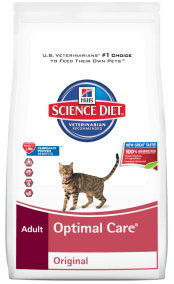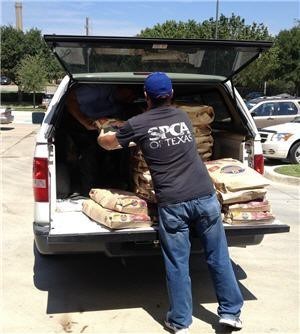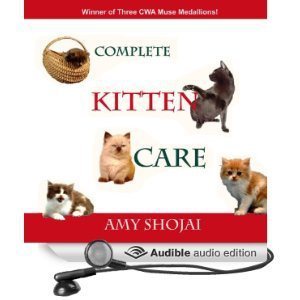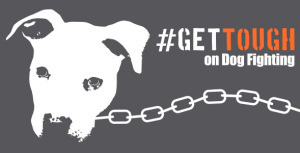Amy Shojai's Blog, page 92
April 23, 2015
Do You Have a Pet Disaster Plan? #FoodShelterLove Tips Here!
This post is sponsored by Hill’s® .I am being compensated for helping spread the word about Hill’s® Food, Shelter, & Love® Program, but Amy Shojai’s Bling, Bitches & Blood Blog only shares information relevant to our readers. Hill’s Pet Nutrition, Inc. is not responsible for the content of this article.

Seren is NOT a fan of the carrier–but it’s the safest spot for her. Image Copr. Amy Shojai, CABC
I live in Tornado Alley, and this year we’ve already had a rash of damaging storms hit North Texas and Southern Oklahoma. Disasters happen all year long, though, and don’t discriminate about where you live. Cats and kittens, puppies and dogs and other animals are victims, too, and often animal shelterslready overstretched become the go-to resource during disasters. That’s where Hill’s® Disaster Relief Network comes in.

Image courtesy of Hill’s.

Image courtesy of Hill’s
Hill’s established the first-of-its-kind national network in 2013 as an extension of its Food, Shelter & Love® program. In its first year, the Hill’s network delivered free pet food to 50 shelters and veterinary clinics across the country in response to 11 major incidents – including floods in Colorado, fires in Idaho and Arizona, tornadoes in Oklahoma and Kansas, the fertilizer plant explosion in Waco, Texas, and most recently, the mudslide in Washington and tornadoes in the central and south regions of the country.
Hill’s Media Tour to talk disaster preparedness and disaster relief kicks off May 7th just in time to coincide with FEMA National Pet Disaster Preparedness Day on May 9th. Here’s a sneak peek to help you plan ahead, so that equal opportunity disasters don’t spoil your day…or life.

Image courtesy of Hill’s
PLAN FOR SHELTER
If you must evacuate, take your pets along. It may be days before authorities allow you to return home.
If you’ve got to evacuate, find a hotel, friend, or other accommodations in advance that will let you bring your dogs and cats. Some places make exceptions for pets in case of disaster but not all accept cats and dogs. While my two cats likely would be accepted, I don’t know if my 90-pound German Shepherd would be as welcome. 
If you must leave your pets or are away when disaster strikes, be sure to display a pet rescue decal on your front door or window to let first responders know there is a pet in the house. Include your veterinarian’s contact information.

Karma likes cozy spots to sleep. Image Copr. Amy Shojai, CABC
KNOW YOUR PETS’ HIDING SPOTS
You’ll need to find them fast so play pet detective and scope out all the hidy holes. Even better, teach your cats and dogs to come when called or take refuge in their pet carrier. Practice ahead of time by leaving surprise treats or simply turning the carrier into the mealtime spot, and “home of irresistible food.”
PROVIDE PROPER IDENTIFICATION
Make sure all dogs and cats are wearing collars and up-to-date pet identification. If you have nothing else handy, use a felt-tip marker and write your phone number and name on the pet’s tummy.
Attach the phone number and address of your temporary shelter, if you know it, to the pet’s collar tags. You can buy temporary tags or put adhesive tape on the back of your pet’s ID tag, adding information with an indelible pen. Write directly on a flat nylon collar or halter to make it easy for a stranger to read the information.
Be sure you have current pictures of your pets with you, too, in case of separation. My cell phone is full of pictures of Seren-Kitty, Karma-Kat and Magical-Dawg.

Image courtesy of Hill’s
PACK FOR YOUR PETS
In addition to providing for human family members, have a “pet kit” ready to take along that contains a three-day supply of all the pet essentials, including food. If easily packed, take an extra towel or blanket for each pet. Don’t forget sturdy leashes, harnesses, carriers or X-pens for safe confinement.

A halter and leash gives you something to grab. Image Copr. Amy Shojai, CABC
Have you ever had to ride out a storm with your pets? How did you manage the situation? What about fire? One year we had horrendous floods here and folks had to flee, awakening with water coming under the door.
How have you managed during disasters? Did you evacuate and take the fur-kids with you, or were you forced to leave them behind? That would just about kill me…I’d likely risk my life and stay with them, if it came down to it. Please share how you prepare for the worst.
Be sure to watch this PAW-some video, too!
I love hearing from you, so please share comments and questions. Stay up to date on all the latest just subscribe the blog, “like” me on Facebook, and get a FREE BOOK when you sign up for Pet Peeves newsletter. You’ll learn about the latest book give aways and appearances related to my THRILLERS WITH BITE!
April 21, 2015
Magical-Dawg Reviews Revel from The Honest Kitchen
 I received a free 2-lb box sample of the new REVEL dog food from The Honest Kitchen for an honest review. I am not being paid for this post, and The Honest Kitchen is not responsible for the content of this article.
I received a free 2-lb box sample of the new REVEL dog food from The Honest Kitchen for an honest review. I am not being paid for this post, and The Honest Kitchen is not responsible for the content of this article.
I was first introduced to The Honest Kitchen at a Blogpaws Conference a couple of years ago, and received some cat food samples. At the time, my old kitty Seren ate a therapeutic food recommended by the vet, so I set aside the samples. Then Karma-Kat showed up on the back patio last February, so hungry he tried to eat my shoes, and I mixed up the samples and have kept the dehydrated cat food on hand ever since.
So when asked to sample Revel, the latest offering for dogs from the company, I agreed. I don’t typically feed canned food to Magic because it’s not really cost effective for his size. I suspected he’d like it, though, since he insists on cleaning out the cat food bowls if I don’t get them picked up in time.
Like the other formulations, Revel is a dehydrated food that comes in 2-pound, 4-pound and 10-pound boxes. A 2-pound box, once the water is added, will make 8 pounds of food. Simply add enough water to hydrate in the consistency you want, wait three minutes, and serve. I used warm water so it would also add to the aroma that stimulates pet appetites.
For folks eager to offer wet food with wholesome ingredients, I like the concept of being able to mix up single-serving amounts as needed. In my experience, once a container of canned food has been opened and leftovers refrigerated, the remaining food is not as well accepted.
Besides the assortment of vitamin and minerals, the human grade ingredients include free range chicken, organic barley, potatoes, organic flaxseed, organic oats, green peas, carrots, bananas, organic kelp, parsley, and celery. I doubt that dogs (or cats) care whether it’s human grade, organic, or not–they don’t read labels, and we know what sorts of things they like to eat, LOL! But for pet parents that prefer highly nutritious and wholesome choices, this is a fine option.
Revel formulation is high protein, high calorie so is recommended for highly active adult dogs, as well as growing puppies. If your dog tends to be overweight or has health issues that preclude these levels, first ask your vet to recommend one of the other formulations that best fits his/her needs. Revel contains 485 calories per dry cup, consisting of 24.5% protein, 15.3% fat and 46.6% carbs.
Magic would happily eat this every day, but for my 90-pound GSD, a 10-pound box (about $60) would only last him 2 weeks. I love him dearly–but this costs about twice as much as his regular ration. However, as a treat or supplement mix to his food this could work well, since he is still very active and in great condition for an 8-year-old doggy.
You can learn more about Revel and the other The Honest Kitchen food products here. And I’ll let Magic tell you what he thinks…
I love hearing from you, so please share comments and questions. Do you have an ASK AMY question you’d like answered–lick the banner, above. Be sure to visit my PetHealthyStore for paw-some products for your furry wonders! Stay up to date on all the latest just subscribe the blog, “like” me onFacebook, and get a FREE BOOK when you sign up for Pet Peeves newsletter. Stay up to date with the latest book give aways, kewl product offers, and appearances related to my THRILLERS WITH BITE!
April 20, 2015
SOLVE PET PEEVES AT EARTH DAY WORKSHOP

Image courtesy of DepositPhotos.com
What “hisses” you off about your cat or dog?
Magic has started table top cruising to get at the cat’s food. Well, he puts his big paws up on the table, doesn’t actually get ON the table, so I guess we’re ahead on that. Karma-Kat uses my legs as moveable scratch objects (ouch!). And now Seren-Kitty has stopped covering up her “creativity” so we have a bit more of an odor control issue in her potty area.
We love our pets with a passion, but they can make us growl, howl, and show our claws when they behave in objectionable ways. What are your pet peeves? The most common ones I hear from clients have to do with potty training and litter box lapses, loud-mouth pets, digging/clawing issues, and jumping up on people (or counters).
The thing is, all of these behaviors are NORMAL. So what’s a caring pet lover to do, besides pull out your hair with frustration?
WHAT’S THE “WHY?”
Well, first we must figure out why they’re driving you nuts bark-bark-barking or playing Tarzan with the drapes. When the behavior is new and has suddenly appeared or abruptly gotten worse, I always recommend a veterinary visit. You’d be surprised how often a behavior complain stems from a health issue that can be diagnosed, treated and resolved by your vet.
If the pet gets a clean bill of health, that’s the time to look at behavioral issues. Knowing what is “normal” and what might be outside the norm also is important. Yes, dogs and cats can suffer from obsessive/compulsive disorders.
Once you know the cause of the behavior—may be stray cats or wildlife is practicing romance outside your window—then interventions can be figured out. Maybe giving the dog a puzzle toy stuffed with treats will keep his mouth busy so he can’t bark nonstop.
Maybe you’ve been adopted by a new kitten, and the other cats have their tails in a twist. One of the quickest ways to create “hate at first sight” that can last a lifetime is to let the cats fight it out. Instead, introduce them slowly, step by step, keeping the newbie in a room alone at first. Oh, there’s a lot more to intros than that, and I’m happy to give you the step-by-step solution on the most common behavior complaints.
FREE PET PEEVES WORKSHOP
 This Saturday April 25th come to my free PET PEEVES workshop during the Texoma Earth Day Festival at the Sherman Municipal Grounds, from 12:30 to 1:20. I’ll explain the mystery behind weird subjects like—why do pets follow you to the bathroom? For those looking for a new furry wonder to adopt, you can learn how to chose the best pet combos using the P.E.T. Test, sure fire secrets to pet introductions, and more.
This Saturday April 25th come to my free PET PEEVES workshop during the Texoma Earth Day Festival at the Sherman Municipal Grounds, from 12:30 to 1:20. I’ll explain the mystery behind weird subjects like—why do pets follow you to the bathroom? For those looking for a new furry wonder to adopt, you can learn how to chose the best pet combos using the P.E.T. Test, sure fire secrets to pet introductions, and more.
I’ll also have copies of some of my pet books available that offer even more detailed explanations and advice about all your cat and dog must-knows. There’ll be treats for the dogs (K-9 Fat Free Treats, my Magical-Dawg loves these!), and a drawing for “earth friendly” Perfect Litter (that turns pink to alert you to possible kitty health problems).
Texoma Earth Day Festival runs from 8:30 to 5:00 pm with many other workshops and lots of entertainment. I understand that adoptable pets also will be available, so you can put your new “peeve-centric” knowledge to work! I’ll see you in the workshop area at 12:30.
I love hearing from you, so please share comments and questions. Do you have an ASK AMY question you’d like answered–lick the banner, above. Be sure to visit my PetHealthyStore for paw-some products for your furry wonders! Stay up to date on all the latest just subscribe the blog, “like” me onFacebook, and get a FREE BOOK when you sign up for Pet Peeves newsletter. Stay up to date with the latest book give aways, kewl product offers, and appearances related to my THRILLERS WITH BITE!
April 16, 2015
Complete Kitten Care–New Cover!
 Hey there, all my Facebook Sweet Peeps may have already seen my SQUEEE! new cover designs on the nonfiction books. So over the next couple of weeks, I’ll post COVER REVEALS here on the blog. You’ve probably already seen them in the sidebar but this is the “official” launch…and a kewl offer, so keep reading!
Hey there, all my Facebook Sweet Peeps may have already seen my SQUEEE! new cover designs on the nonfiction books. So over the next couple of weeks, I’ll post COVER REVEALS here on the blog. You’ve probably already seen them in the sidebar but this is the “official” launch…and a kewl offer, so keep reading! 
First up–COMPLETE KITTEN CARE! The new cover version is now available in print and kindle on amazon, and other platforms soon. This was the first book that I “kindle-ized” and is a title that quite literally has had 9 lives (and counting). For writers out there, this experience possibly will give you hope. Some of y’all may have heard this before.
COMPLETE KITTEN CARE wasn’t the original title. Nope, I was asked to write KITTENS FOR DUMMIES when that brand was pumping out titles like…well, like kittens. After I turned in the manuscript to the editor, and she accepted it, the “For Dummies” publishing franchise was sold to another company, and a bunch of contracted books got cancelled. My editor simply emailed me the news–“sorry but your book has been cancelled.”
Oy.
WHEN BOOKS GET CANCELLED…
I could have ranted and raved and thrown a fit. Instead, I re-read my contract and then sent back a reply to the effect: “So sorry to learn this disappointing news. Since the manuscript has been delivered by deadline, and ACCEPTED, I am entitled to payment in full of the advance as outlined in my contract, and full reversion of the rights. Please advise when I will receive the payment.”
Great lesson–always know what’s in your contract. Most are written in kitty litter so don’t take the first “boilerplate” they offer. Ask for better terms–they won’t shoot you for asking, and may even say yes! If they say “no” then you can decide whether to sign or not.
That same day, I emailed my editor for the “aging” pet books (from New American Library/Penguin) and offered the manuscript to her. The reformatted, re-titled book became COMPLETE KITTEN CARE. That book went on to win several CWA Muse Medallion and Special Awards from the Cat Writers’ Association for both the content and the photos, mee-wow!
Oh, and did I mention that I got paid a SECOND advance for the book, this time from NAL? And a few years later, when the “dummies” franchise rethought their titles, a friend of mine was offered the chance to write the kitten book in the series–which also won subsequent CWA awards. Kewl beans!
WHEN BOOKS GET KILLED…
This could have been the end of the story, but I promised you nine lives, didn’t I?  As happens with traditional publishing, when a book no longer sells as well it probably will be “remaindered.” That’s a fancy term for “killed” which means the book gets offered at a deeeeeeeep discount to get rid of left over copies, no more are printed, and it “goes out of print.”
As happens with traditional publishing, when a book no longer sells as well it probably will be “remaindered.” That’s a fancy term for “killed” which means the book gets offered at a deeeeeeeep discount to get rid of left over copies, no more are printed, and it “goes out of print.”
Bummer. Hey, this was an award winning book! and the information actually is pretty ever-green. Remembering the lesson from before, I asked my then-agent to get the rights reverted to me…and then I did nothing for a year or so other than create a head-shaped dent in my office wall and invest in Kleenex with woe-is-me pity parties.
Enter Kindle. Actually, I came late to the party, but finally decided–what the heck? I stuck my furry toe in the digital publishing waters with COMPLETE KITTEN CARE, and learned not only how to properly format text but also pictures. Oh, and redesigned the cover because New American Library owned the original art.
WHEN AUTHORS GET REINVENTED…
That led to me partnering with Cool Gus Publishing to bring COMPLETE KITTEN CARE back into print and in other Ebook formats so y’all can read it via Nook or iTunes or however you want. And THEN, the next incarnation–AUDIO BOOK! You’ll notice that it’s my voice on the recording, too, since people seem to like hearing authors read their own nonfiction titles. All those years performing onstage paid off!
 Yes, the AUDIO COMPLETE KITTEN CARE is available at Amazon, Audible.com and iTunes. (You can get it FREE with a 30 day trial membership at Audible.com).
Yes, the AUDIO COMPLETE KITTEN CARE is available at Amazon, Audible.com and iTunes. (You can get it FREE with a 30 day trial membership at Audible.com).
Also, next Tuesday, I’ll be giving away free codes to review the Audible version of the book, through this really neato service AUDIOBOOKBLAST.COM where you can sign up for free to receive review copies of whatever kind of book you like. (COMPLETE KITTEN CARE will be in the “general nonfiction” category).
That cover, though, was due a furry facelift. See, I used the same sort of “style” as the design on the original NAL print cover, and times have changed. Hence, the cover reveal for the updated look to match the spiffy updated content. And yes, the photos inside are now in color in the digital versions!
So do you know someone with a kitten in his/her future? Or perhaps a shelter that would benefit from having the audio version in their educational library? It’s kitten season! Please share this post with anyone you think would benefit from some SQUEEEE! cuticity and solid kitten care info.
And remember, if you’d like a FREE copy of the audio version to review, please sign up for AUDIOBOOKBLAST.COM and check the GENERAL NONFICTION category before next Tuesday. I’ll have codes for both the US and the UK store.
I love hearing from you, so please share comments and questions. Do you have an ASK AMY question you’d like answered–lick the banner, above. Be sure to visit my PetHealthyStore for paw-some products for your furry wonders! Stay up to date on all the latest just subscribe the blog, “like” me on Facebook, and get a FREE BOOK when you sign up for Pet Peeves newsletter. Stay up to date with the latest book give aways, kewl product offers, and appearances related to my THRILLERS WITH BITE!
April 13, 2015
Feeding the Muse: Roses, Armadillos & Publishing
 How do you feed your muse? I’ve been head-down busy these days playing catch up on all the writer-icity that had been put on a back burner for far too long. My muse is hungry, screaming for attention, like an itch in that impossible-to-reach spot in the middle of your back. Once you finally start scratching it feels soooooooooo good you don’t want to ever stop.
How do you feed your muse? I’ve been head-down busy these days playing catch up on all the writer-icity that had been put on a back burner for far too long. My muse is hungry, screaming for attention, like an itch in that impossible-to-reach spot in the middle of your back. Once you finally start scratching it feels soooooooooo good you don’t want to ever stop.
I’m bad at promising to scratch the itch “as soon as…” (fill in the blank) which is why I’m so far behind. The truth is, the muse doesn’t care that we’re busy with real life, or that we only have 10 minutes to spare. The muse just acts hungrier and more demanding the longer we ignore her whispers, cries, screams for attention.
Sort of like a cat.
 A muse doesn’t care if we scribble on napkins, type with a keyboard, twitter or fritter our litter-ary time with print or Ebooks. She wakes us at 3 a.m. and demands to be fed, she sinks dagger claws into our heart and soul. The muse pushes that soggy nasty ball into our lap, urging us to throw-throw-throw with all our might, promising how good it will feel and to return that ball to our willing hand time after time after time.
A muse doesn’t care if we scribble on napkins, type with a keyboard, twitter or fritter our litter-ary time with print or Ebooks. She wakes us at 3 a.m. and demands to be fed, she sinks dagger claws into our heart and soul. The muse pushes that soggy nasty ball into our lap, urging us to throw-throw-throw with all our might, promising how good it will feel and to return that ball to our willing hand time after time after time.
She won’t relent until we give in to the urge. The urge to write. To create.
Some of y’all know that we have had as many as 700 rose bushes surrounding our home. Over the years, the roses have been attacked by grasshoppers, leaving nothing but Addams Family stems; bulldozed by armadillos so tender roots fried in Texas sun; and over-pruned, which killed or crippled the plant. We lost roses that had spectacular flowers and amazing pedigrees. Mostly we lost the hybrids, high maintenance specimens that were less able to tolerate the insults, and demanded more attention and care to produce blooms.
But the grasshopper-eaten roses with viable roots produced fresh, healthier growth. Even ‘dillo-dozed roses survived—with scars, to be sure, but still produced stellar blooms. Stay with me, folks, there’s a rose-thorn-sharp point to be made . . .

As an over-zealous pruner, I’ve learned to restrain my instincts and appreciate the thorny, hardened portions of established bushes. This was a hard lesson to learn. See, if they’re cut out completely, there’s no scaffolding to support fresh growth, and the blooms fall in the dirt and are trampled–and the whole bush becomes mulch.
After more than two decades of writing, I’m a prickly, hardened bitch-of-a-pet writer. I do not flinch at the “B” word, it’s a badge of honor in my world. I know when to show my teeth, and choose my battles wisely. So I have less patience for high-maintenance writers or circle-the-wagons “that’s the way we’ve always done it!” attitudes than in my youth. WARNING: Those grasshoppers are voracious and if your roots ain’t healthy, you’re toast.
Don’t let that fact scare you. I can say that now–you can’t seen the head-shaped dent in my office wall from having the pee scared outta me mild concern. Writing is writing, and readers are readers. Publishing has a healthy root system, and will survive armadillos, grasshoppers–and Ebooks, Audio-books, iPads, and whatever-comes-next-pads. It just needs to cut back on the fertilizer and prune judiciously.

Meanwhile, writers—and readers—support each other. Love a book or a writer—say so far and wide! Know a writer struggling with the effort of reinventing themselves? Shine a little color in that corner. That’s what sustains us through the dry spells, the never-ending deadlines, and rejections that nibble us raw. Mentoring each other keeps us sane–that’s the thorny protection that allows us to create our visions and bloom in our proper season.
I want to give a shout out to my colleague Deborah Barnes and her newest book Purr Prints of the Heart: A Cat’s Tale of Life, Death & Beyond. Take a look and see how her Muse inspired her.
Now then, listen–shhhhhh! Listen! Can you hear that?–put your hand over your heart, and you can almost feel the rumble!? No, it’s not the printer whirring…well, maybe it is. But listen closer—and you’ll hear symphony of blissful purrs, and the whist-whist-whist of happy wags–the sound of confident, tenacious, and oh-so-proud garden full of Muses.
Or maybe that’s tummies growling…So all you Creatives out there, the writers, the story tellers, the painters, the poets, the singers and musicians, and and and … Go feed your muse!
I love hearing from you, so please share comments and questions. Do you have an ASK AMY question you’d like answered–lick the banner, above. Be sure to visit my PetHealthyStore for paw-some products for your furry wonders! Stay up to date on all the latest just subscribe the blog, “like” me on Facebook, and get a FREE BOOK when you sign up for Pet Peeves newsletter. Stay up to date with the latest book give aways, kewl product offers, and appearances related to my THRILLERS WITH BITE!
April 8, 2015
Cat Health Featured on Discovery Channel

Image courtesy of DepositPhotos.com
Last week, I received this press release with a request that I share it today–and I’m such a huge fan of the AAFP and anything that will help our cats, that I’m delighted to share this news of a wonderful cat health feature on Discovery Channel. The American Association of Feline Practitioners also just confirmed their sponsorship of a Cat Writers’ Association “Cat Friendly” Award for the 2015 contest to encourage getting the word out about how to help cats get health care they need. Find out more about sponsorship ops here.)
Watching this upcoming TV segment is a fantastic opportunity to find out more about the work that AAFP does on behalf of cats and the people who love them. Hurray for Discovery Channel for making this possible!
Now then, if you love cats, read on–and then share with all the other kitty advocates.
Innovations Series, to Feature American Association of Feline Practitioners
Discovery Channel, April 20, 2015
DMG Productions explores the latest advancements in animal health
Hillsborough, NJ— The American Association of Feline Practitioners (AAFP) will be featured on an episode of Innovations with Ed Begley Jr., airing via The Discovery channel Monday, April 20, 2015 at 7:30 a.m. EST / PST.
The AAFP improves the health and welfare of cats by supporting high standards of practice, continuing education for veterinary professionals, and scientific investigation. Scroll down for a video sneak peek of the AAFP’s Discovery Channel debut!
In this segment, Innovations will educate viewers about the AAFP’s dedication to advancing the field of feline care through supporting veterinary professionals in elevating the standard of care for cats. The association also focuses on educating cat owners to increase their understanding of feline behavior, the value of veterinary care, and the need to actively participate in their cats’ individual healthcare plan. The AAFP’s Cat Friendly Practice® Program (CFP) designation is a major way the association is innovating the field of feline medicine.
Viewers will learn about the AAFP’s CFP designation, which is a program that provides the tools for veterinary professionals to integrate a feline perspective and embrace the standards needed to elevate care for cats. It equips practices with the tools, resources, and information to improve the treatment, handling, and overall healthcare of cats. The CFP program also focuses on reducing the stress of the veterinary visit for both cats and cat owners.
“The AAFP’s Cat Friendly Practice Program is a groundbreaking program in veterinary medicine,”said Susan Little, DVM, DABVP (Feline), 2015 AAFP President. “The time is ripe for a program that helps veterinary practices do the best they can with their feline patients. The CFP program is about setting the standards of care, educating veterinary practices about what their feline patient’s need, about decreasing the stress of the veterinary visit, and it’s about making sure that once the cat is at the veterinary clinic they receive the best quality of care that’s appropriate to the cat.”
In addition, the segment will examine how the AAFP focuses on educating cat owners to increase their understanding of feline behavior, how to reduce the stress of the veterinary visit which actually starts at home before the cat even gets to the clinic, the value of routine veterinary care, and the need to actively participate in their cats’ individual healthcare plan.
“We are thrilled to be able to bring this important information to our viewers,” said Michele Nehls, Producer for the series. “Cat lovers around the world will be amazed by the cutting-edge feline-friendly advancements the AAFP’s Cat Friendly Practice program provides.”
The segment will air Monday, April 20, 2015 at 7:30 a.m. EST/PST via The Discovery Channel and be available to view immediately after at: http://www.catvets.com/cfp/ . Dates and times of additional broadcast airings of the episode are still TBD.
About The American Association of Feline Practitioners:
The American Association of Feline Practitioners (AAFP) improves the health and welfare of cats by supporting high standards of practice, continuing education and scientific investigation. The AAFP has a long-standing reputation and track record in the veterinary community for facilitating high standards of practice and publishes guidelines for practice excellence which are available to veterinarians at the AAFP website. Over the years, the AAFP has encouraged veterinarians to continuously re-evaluate preconceived notions of practice strategies in an effort to advance the quality of feline medicine practiced. The Cat Friendly Practice program is the newest effort created to improve the treatment, handling, and overall healthcare provided to cats. Its purpose is to equip veterinary practices with the tools, resources, and information to elevate the standard of care provided to cats. For more information or to find a Cat Friendly Practice by you, visit: www.catvets.com.
About Innovations and DMG Productions:
Innovations, hosted by award winning actor Ed Begley, Jr., is an information-based series geared toward educating the public on the latest breakthroughs in all areas of society. Featuring practical solutions and important issues facing consumers and professionals alike, Innovations focuses on cutting-edge advancements in everything from health and wellness to global business, renewable energy, and more. For more information visit: www.InnovationsTelevision.com, or contact Michele Nehls via phone at (866) 496-4065 x 822 or via email at: Ryann@InnovationsTelevision.com.
I love hearing from you, so please share comments and questions. Do you have an ASK AMY question you’d like answered–lick the banner, above. Be sure to visit my PetHealthyStore for paw-some products for your furry wonders! Stay up to date on all the latest just subscribe the blog, “like” me on Facebook, and get a FREE BOOK when you sign up for Pet Peeves newsletter. Stay up to date with the latest book give aways, kewl product offers, and appearances related to my THRILLERS WITH BITE!
April 6, 2015
5 Kinds of Dog Aggression: Get Tough on Dog Fighting

Images courtesy of DepositPhotos.com
April 8th is DOG FIGHTING AWARENESS DAY, and it’s a good time to review the 5 common kinds of dog aggression and what to do. According to the ASPCA, dog fighting happens all over the country and in all kinds of communities–rich, poor, middle class, it doesn’t matter, it’s there festering just beneath the surface. When fight rings are located, cases are built, offenders are prosecuted, and abuse survivors find loving homes. In 2014, the Department Of Justice prosecuted 10 federal dog fighting cases and secured the longest sentence (8 years) ever received in a federal dog fighting case. Learn more here.

Image Courtesy of ASPCA
In an effort to stamp out this cruel “sport” (yes, that’s what proponents call it, can you imagine?!), the #GetTough on Dog Fighting campaign offers free information and ways for all animal lovers to get involved.
Hey, dog fighting isn’t just about one breed. It impacts ALL dog owners–and cat lovers, too, because dogs are trained to fight by “practicing” on other animal victims. Spectators even bring kids to the fights to introduce them to the sport. *wiping eyes* The thought makes me weep with anger. So my next novel SHOW AND TELL shines a light on this dirty practice.
5 Kinds of Dog Aggression
Here’s the deal. Aggression is a NORMAL part of being a dog, and while dog-on-dog aggression is more prevalent in some breeds, ALL dogs have the potential to fight and bite. Aggression can arise out of pain or health issues. Growly dogs believe they have a good reason to aggress (they often do!) whether owners agree or not.
Aggression can be complicated and require professional help, but here’s how to recognize 5 common types and learn how to keep the peace.
 Play Aggression looks scary but dogs tell each other it’s just pretend by using gestures like the play bow (butt up, front down). Puppies learn to inhibit bites when they play with other dogs, and owners also can teach limits.
Play Aggression looks scary but dogs tell each other it’s just pretend by using gestures like the play bow (butt up, front down). Puppies learn to inhibit bites when they play with other dogs, and owners also can teach limits.
If the mouthing hurts, YELP like another puppy. Whimper and say, “You hurt me.” Immediately after you yelp, give the dog a 10-minute time out—no mouthing allowed—to teach him that hard bites make the fun stop.
Predatory Aggression includes stalking, chasing, catching and biting like in play, but predatory dogs won’t play bow—they’re deadly serious. Joggers, bicyclist, and moving cars and cries of young children, babies and smaller pets can trigger prey drive.
Predatory behavior may go away as the youngster grows up, but keep targets safe with strict supervision. Identify triggers (like joggers) and avoid them. Teach dogs to control natural impulses with obedience drills. A “happy” word the dog can’t resist (ball, cookie, ride) can often change the dog’s attitude and interrupts the behavior.
 Fear Aggression results when a dog can’t escape a scary situation. Caged, chained or cornered dogs often bite out of fear. Snarls, growls or bites make the scary “thing” go away, which rewards the dog so she’ll repeat the behavior. Reaching for the scared dog’s collar almost always prompts a bite, because a hand descending toward the head looks threatening.
Fear Aggression results when a dog can’t escape a scary situation. Caged, chained or cornered dogs often bite out of fear. Snarls, growls or bites make the scary “thing” go away, which rewards the dog so she’ll repeat the behavior. Reaching for the scared dog’s collar almost always prompts a bite, because a hand descending toward the head looks threatening.
Avoid petting on the top of the head. Instead, pet the dog’s sides or chest. Don’t stare, which can intensify intimidation. Play builds confidence, so teach “fetch” while avoiding tug-games that can encourage fear biting behavior. Use pheromone therapy such as Comfort Zone with DAP to help calm fears.
Territorial aggression typically involves herding and protection breeds. Dogs bark, lunge and growl at the fence or doorway, and are rewarded when the mailman, new dog, or your fiancé goes away. Conspire with visitors so the outcome changes.
Have the mailman toss treats to the dog, but without making eye contact or saying anything. Once the dog quiets to munch the treat, the mailman can say, “Good Rex!” and walk away. He should NOT walk away as long as the dog barks and lunges. If Rex ignores the treat and continues to bark and lunge, then YOU call the dog and reward him with a treat or toy for coming. The mailman leaves as the dog retreats—so essentially neither won.
Guarding Food, Toys, Furniture are all part of dominance aggression. These dogs often object to being restrained—as for nail trims—and the aggression can gets worse with punishment or confrontation. They’re often young intact male dogs who want to call the shots with people, but then tremble or seem to act “remorseful” afterwards. An argument over toys or mealtime that prompts a first instinctive snarl teaches the dog that aggression keeps others a safe distance from important resources.
Dominance aggression can be complicated and dangerous to solve and usually requires a professional. Neutering the dog and managing resources can help. If the dog protects toys, remove them so he has nothing to guard. Require the dog to “earn” privileges by paying with good behavior. For instance, ask him to “sit” (he sits), which earns him what he wants (attention/food bowl/open door/verbal praise). He should get NOTHING unless he earns it by responding in a positive way to your command.
Are dog fights a problem in your community? Have you ever had an issue with aggression in your dogs or in a dog that belongs to someone else? How did you handle it?
I love hearing from you, so please share comments and questions. Do you have an ASK AMY question you’d like answered–lick the banner, above. Be sure to visit my PetHealthyStore for paw-some products for your furry wonders! Stay up to date on all the latest just subscribe the blog, “like” me on Facebook, and get a FREE BOOK when you sign up for Pet Peeves newsletter. Stay up to date with the latest book give aways, kewl product offers, and appearances related to my THRILLERS WITH BITE!
March 30, 2015
Cat Falls? How Do Cats Land On Their Feet

Images courtesy of DepositPhotos.com
Ever wonder how do cats land on their feet? How do they escape injury–or do they? Legends and myths sometimes arise out of a misunderstood truth, and kitty-correct four-paw landings are one such behavior.
Yes, cats have an uncanny ability to fall safely from sometimes death-defying heights and land on their feet, which perhaps gave birth to the “nine lives” legend. After all, if cats could fall from great distances and survive, they must have a spare life or two more than “normal” beings, right?
When I worked as a vet tech, though, we saw countless cases of cats injured from falls. I still wince thinking about the kitties with split palates and broken jaws or worse. Because those landings aren’t always soft!
When Seren was a kitten, she squeezed between the rails of our second-story landing, and slipped off to fall–and land–on the hardwood floor below. Yep, she did land on her feet–and thank the cat gods kittens bounce!
But do cats always land on their feet? And how do they do it?
How Cats Land On Their Feet
Paw-perfect landings result from the cat’s intricate balance sense. The vestibular organ deep inside the cat’s ears keeps kitty informed about which way is up or down, even if you try to confuse and make him dizzy first. In fact, people have done some crazy experiments, everything from blindfolding Kitty to putting cats in bags or boxes and spinning them around before “test dropping” to see if the the righting mechanism still works.
It does. This specialized organ also allows the cat to instantly determine acceleration as she falls.
The vestibular organ contains tiny fluid filled tubes and structures called the semicircular canals plus the utricle and saccule, each lined with millions of microscopic hairs. Fluid in the utricle and saccule also contain tiny particles of chalk that float and move with every motion. Whenever the cat’s head moves, the fluid is set in motion, and the floating chalk touches against the hairs. The hair movement, like teeny kitty antennae, relay information to the brain about body position, and speed of movement.
The balance mechanism can’t do it alone, though. Once partnered with the yoga-like muscle control of a Houdini master contortionist, the cat twists from side to side during a fall, to right herself.
Ear infections can affect the cat’s balance so she misjudges height or positioning. Tiny kittens can be injured in falls that might not hurt an adult cat, so kitten-proofing balconies and keeping baby cats “grounded” can help keep them safe. Yes, I learned my lesson with Seren!
Falls from short distances—like from a child’s arms—may not allow enough time for the righting mechanism to work. Landing on her feet does not prevent Kitty from sustaining serious injuries during falls. In fact, because cats adore heights and often look for the tallest perch, fall injuries are not at all uncommon. When the weather turns warm, window-perching cats can be at increased risk.
High Rise Syndrome & Surviving Dangerous Falls
High rise syndrome refers to cats who fall great distances out of windows, balconies or open doors. Often the cat lounges on a favorite windowsill, and accidentally pushes window screens out and falls.
Falls from the first through fourth floors are least dangerous because the cat can “right” herself and doesn’t have time to reach top speed of 60 miles per hour—terminal velocity. She won’t fall any faster, no matter the distance. This speed is reached during any fall from higher than the fifth floor. However, these cats can still end up cracking their chin when they land.
Falls from the fifth through ninth floor are the most dangerous and result in the worst injuries. The cat falls with legs braced in front of him, and lands rigid. His legs hit first, then his head, and both can suffer terrible bone-shattering injury.
Cats survive falls from higher than nine stories with fewer injuries. Falls from these heights apparently allow the cat time to relax, empty the bladder and “parachute” the legs outward so that the wind catches the loose skin in the thighs and armpits and slows the fall sort of like a flying squirrel that glides. Landing spread-eagle allows the chest and abdomen to absorb most of the shock, rather than the head and legs. These falls can still cause bruised or ruptured internal organs.
Keep open windows and balconies off limits to cats. Remember that screens are designed to keep bugs out, not keep cats inside. So protect your cats and windows with secured screens or pet-safe barriers.
I love hearing from you, so please share comments and questions. Do you have an ASK AMY question you’d like answered–lick the banner, above. Be sure to visit my PetHealthyStore for paw-some products for your furry wonders! Stay up to date on all the latest just subscribe the blog, “like” me on Facebook, and get a FREE BOOK when you sign up for Pet Peeves newsletter. Stay up to date with the latest book give aways, kewl product offers, and appearances related to my THRILLERS WITH BITE!
March 28, 2015
Do You Speak Cat? Learn How in This Webinar

Image courtesy of DepositPhotos.com
Hey there Sweet Peeps! Thanks to the great folks at Pet Healthy Store, I’ll present a fun AND FREE! webinar this Thursday April 2 (3:30 EDT).
SAY, WHAT? How Learning
“Cat-Speak” Solves Your Pet Peeves
This is based on the information from my ComPETability(Cats) book, and is so important I wanted to share these basics for free. You will learn:
3 ways cats communicate.
How to “listen” to what your cat says.
Ways to purr-suade cats to behave.
Quick fixes for “bad” (aka NORMAL) behaviors.
SIGN UP AT THIS LINK!
Q&A to follow so bring your fun kitty questions to Ask Amy.
And yes…did you notice the neato-torpedo new COVER for the book? I am PURRRRRING over that!
I love hearing from you, so please share comments and questions. Do you have an ASK AMY question you’d like answered–lick the banner, above. Be sure to visit my PetHealthyStore for paw-some products for your furry wonders! Stay up to date on all the latest just subscribe the blog, “like” me on Facebook, and get a FREE BOOK when you sign up for Pet Peeves newsletter. Stay up to date with the latest book give aways, kewl product offers, and appearances related to my THRILLERS WITH BITE!
March 27, 2015
Cats & Easter Lilies, A Deadly Combo!

What’s WRONG with this picture??? Image Courtesy of DepositPhotos.com
This is a repeat of a column I write nearly every year to warn pet lovers and especially those with cats. The gorgeous lily makes its appearance each Easter, decorating church, home, and garden. I can’t have them in my house, though. I won’t to risk having an Easter lily anywhere near my cats Seren and Karma or for Magical-Dog. For cats especially, the fragrant blooms can mean death.
Don’t get me wrong, I love lilies. They’re gorgeous. And I love flowers–our house is surrounded by about 500 rose bushes getting ready to bloom this spring. But my Seren-kitty likes to munch any plant I bring into the house and Karma will play with anything.

Image courtesy of DepositPhotos.com
Many lilies are lethal to cats. Easter lilies, stargazer lilies, and Asiatic lilies are the most dangerous, and different cats react in various ways. The plants contain a chemical that can damage the kidneys, and kill your cat. Dogs often gnaw leaves, dig up the plant, or eat the whole thing.
Felines more often paw-pat and shred leaves and stems during play, and may be poisoned when they later lick and clean their paws and claws. Just biting a leaf or petal can be enough to cause serious kidney disease. Hopefully that picture, above, used fake blooms to stage the image–YIKES!
CATS CAN BE POISONED BY DRINKING THE WATER FROM THE VASE!
SIGNS OF LILY POISONING
Cats poisoned by lily toxin typically suffer kidney failure within 36 to 72 hours. Symptoms include vomiting, lethargy or loss of appetite. Some cats suffer permanent kidney damage and lose their lives, while others can recover if treated in time with dialysis that gives the organs enough time to heal.

Roses can injure cats if they bite thorns, but aren’t toxic and actually are edible…according to Seren!
The easiest way to protect your cats is to keep toxic plants out of reach—or out of your house altogether. Besides lilies, other potential harmful plants include rhododendron, sago palm, kalanchoe and schefflera. Azalea can cause vomiting, diarrhea, seizures, coma and death. Eating or chewing caladium, dieffenbachia or philodendron makes the tongue and throat swell up so breathing is difficult. Mother-in-law’s tongue (snake plant) causes everything from mouth irritation to collapse. Crown of thorns and English ivy will prompt thirst, vomiting and diarrhea, stomach pain, and death in one to two days. Holly also causes stomach pain, vomiting and diarrhea.
You can keep your pet family members safe and sound by choosing only pet-friendly safe varieties for your garden and home. Calla lilies and peace lilies, which don’t belong to the Lilium genus, are harmless to cats.
There are many other plants that prompt mild problems, such as excess salivation or mouth discomfort. Keeping these out of reach of curious paws may be sufficient to protect your animals. But pet lovers should steer clear of the worst plant offenders, both inside and out. If you see your pet with one or more of these signs, particularly if a suspect plant is within reach, get help immediately! First aid can save the cat or dog’s life. Then take the pet to see the veterinarian as quickly as possible.
FIRST AID FOR PLANT POISONING
Different poisons require very specific first aid. Usually that will be either 1) induce vomiting, (cats do this on their own very well–but never when you want them to!) or 2) give milk or water to wash out the mouth and dilute the poison. Making the pet vomit the wrong poisonous plant, though, could make a serious situation even more deadly, so you MUST know what to do for each type of plant.
Detailed advice for dealing with the most common plant poisoning is available in the book The First-Aid Companion for Dogs and Cats. The ASPCA Animal Poison-Control Center is available for telephone consultations (1-888-426-4435) in case of poisoning emergency.
What cat-safe plants do you have in your home? How do you keep the cat from destroying/eating them? Have you ever had a kitty-plant encounter of the dangerous kind?
Leave Blank:Do Not Change:
Your email:
I love hearing from you, so please share comments and questions. Do you have an ASK AMY question you’d like answered–lick the banner, above. Be sure to visit my PetHealthyStore for paw-some products for your furry wonders! Stay up to date on all the latest just subscribe the blog, “like” me on Facebook, and get a FREE BOOK when you sign up for Pet Peeves newsletter. Stay up to date with the latest book give aways, kewl product offers, and appearances related to my THRILLERS WITH BITE!







